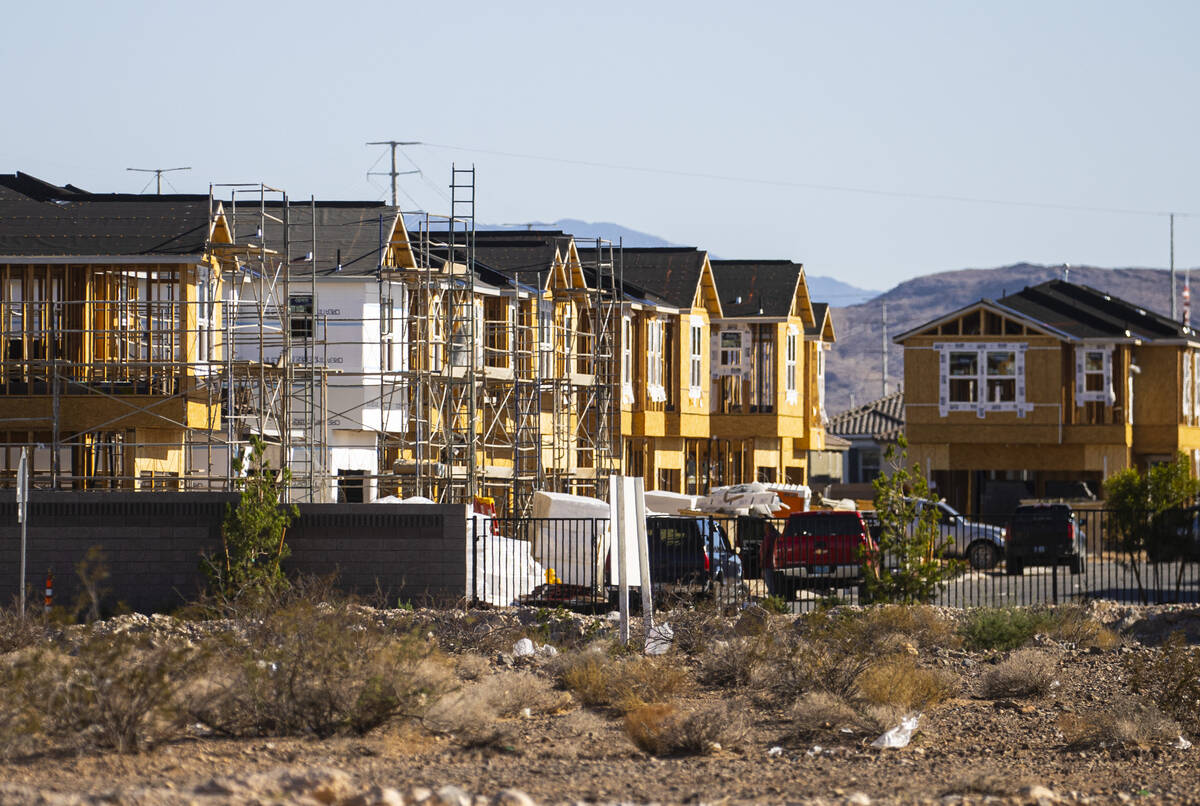Who’s to blame for Las Vegas’ shortage of affordable housing?
Major homebuilders such as Lennar, KB Home and D.R. Horton have no appetite for affordable housing, the head of the Southern Nevada District Office’s Bureau of Land Management claims.
Affordable housing is a “critical issue” in the valley and the land and housing crisis is a “puzzle,” said Theresa Coleman, the district manager for the BLM, which controls 88 percent of Clark County’s land, in an email response to the Las Vegas Review-Journal. She said there have been discussions between the BLM, the U.S. Department of Housing and Urban Development, Clark County and its three largest municipalities about the issue.
“The municipalities expressed that the primary constraint for affordable housing for low-income residences in the county is the limited availability of developers capable of providing this type of construction,” she said. “Further, they noted that developers are constrained by their capacity to facilitate four low-income residence projects per year. Both the BLM and HUD are staffed and available to issue more than four patents (document that transfers the land to a private person or company) per year if additional patent requests are received.”
In the Southern Nevada Public Land Management Act, which was passed in 1998 with the intention of the federal government offloading land in a timely manner, it outlines that land for “affordable housing purposes” can only be made “available to state or local governmental entities, including local public housing authorities” for a below market value rate.
HUD defines affordable housing as the occupant or homeowner not paying more than 30 percent of gross income on housing costs, including utilities.
Lennar, KB Home and D.R. Horton, three of the biggest homebuilders in the valley, didn’t return messages seeking comment on BLM’s statement and their ability to build affordable housing.
The valley finds itself embroiled in a growing housing crisis as prices continue to rise on multiple fronts including residential real estate and land value while affordability and elevated rental prices are pinching regular Las Vegas residents.
In a recent commercial real estate panel held in Las Vegas, KB Home’s Scott Bleazard, the vice president of land acquisitions, said there is simply no such thing as affordability in the valley now.
“And we just don’t have that much land left, it’s six to eight years if we are pulling 10,000 permits a year,” he said.
According to its website, KB Home is building townhomes in the Las Vegas Valley starting in the mid-$300,000s and single-family residences starting in the low $400,000s.
How did we get here and who’s to blame?
To make matters worse, close to a quarter million affordable housing units could be taken off the market across the country over the next five years, according to an Associated Press investigation. A wave of affordable housing was built in the 1990s under the Low-Income Housing Tax Credit, a federal program set up in 1986, however many of the units were only required to remain at “affordable” levels for 30 years, a deadline now fast approaching which could force a reckoning of the country’s housing supply.
Nevada is short more than 78,000 affordable rental units for extremely low-income renters, according to estimates from the National Low Income Housing Coalition, a number that has been steadily rising over the past few years.
This has invariably pushed the valley’s most vulnerable residents to the edge as a recent HUD study found that homelessness in Clark County jumped 16 percent last year alone.
Homeownership is now out of reach for many working families as well, said Tina Frias, the CEO of the Southern Nevada Home Builders Association, and the federal government needs to respond to the private sector’s demands to help alleviate the crisis.
“The BLM’s inefficient process for disposing of land is as equally problematic as the limited amount of available land for development,” she said. “If we can’t access the land in a reasonable amount of time, the land within the disposal boundary, irrespective of the available acreage for development, will not have a meaningful impact on the shortage of housing supply that is creating formidable challenges for Southern Nevadans seeking the American dream of homeownership.”
Frias said costs have skyrocketed and made development basically unaffordable in the valley regarding the residential side.
“We are averaging about $1 million per acre across the valley and even as high as $1.5 million per acre in some areas within the valley,” she said. “This per acre figure could be lowered if Southern Nevada wasn’t so limited on available land. Land supply directly ties to the average cost of land and overall housing market prices.”
However, Nevada Housing Coalition Executive Director Maurice Page said he’s “encouraged” by the recent movement of the federal government on the issue.
“BLM has shown a commitment to collaborating with nonprofits, developers, and federal, state, and local governments to explore ways to increase the affordable housing inventory,” he said. “They are also examining the timeline challenges developers face in securing funding once land becomes available.”
Contact Patrick Blennerhassett at pblennerhassett@reviewjournal.com. The Associated Press contributed to this report.




















